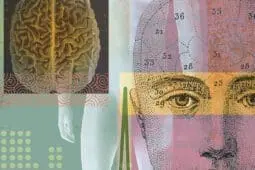Brain
VIDEO: How to Install New Mental States
What Therapists Should Know about Brain ChangeUntil recently, the impact of brain science on the everyday work of most therapists has been pretty limited. According to Rick Hanson, that’s because we’ve... Read more
VIDEO: How to Make Clients Feel Safe
Today's Video: Bringing Polyvagal Theory into Your PracticeHow can therapists acquire neuroscientific knowledge without becoming brain scientists themselves? Even more pressing, what real-life practical therapeutic... Read more
Brain Imaging and Psychotherapy
Why is it so controversial?For nearly 20 years, psychiatrist Daniel Amen has led a controversial crusade to make brain imaging an accepted part of psychotherapeutic practice. Read more
Putting the Pieces Together
25 Years of Learning Trauma TreatmentTwenty-five years ago, we believed that helping trauma survivors dig into dark and unspeakable horrors would set them free. But in this new age of trauma... Read more
Engaging the Emotional Brain
Highlights from Symposium 2014To get through to clients in our increasingly ADD culture, therapists must learn to evoke a deeper, more visceral engagement with them. At this year’s... Read more
Do Brain Games Build Cognitive Muscle?
Grim Job Prospects for Mental Health GradBrain games and grad prospects Read more
The Case for Neurofeedback
Rewiring the brain in the consulting roomThe increasing popularity of neurofeedback is based on the growing evidence that a wide variety of psychological disorders can be understood as firing mistakes... Read more
Managing Transference and Countertransference in Somatic Therapy
Does Body-Oriented Therapy Increase the Risk of Transference and Countertransference Responses?Therapeutic skeptics still cite the possibility of stirring up intense transference and countertransference responses as a compelling reason not to use more... Read more
VIDEO: Psychotherapy as Experiential Drama
Jeffrey Zeig on Bridging the Gap between Knowing and RealizingJeff explains the tools he uses to make therapy a true experience—including trance, novelty, and precision in his use of language, and resonant gestures that... Read more
Mindfulness-Based Stress Reduction: The Precursor to Mindfulness Therapy
Mindfulness-Based Stress Reduction Brings Eastern Mindfulness Techniques to Western MedicineIn the late 1970s, before mindfulness exercises caught on in psychotherapy, mindfulness meditation was making inroads into the medical community. This was... Read more
VIDEO: What Does a Client Really Want from Therapy?
Stephen Gilligan on the First Step Toward a Creative BreakthroughIn this clip Stephen Gilligan talks about one of the techniques he employs to help new clients be more specific in setting their therapy goals. Read more
Understanding Somatic Experience: Working With the Body to Heal the Mind
How Can Therapists Overcome Fears About the Body with Clients Who Struggle to Heal from Painful Somatic Experiences?It’s the very fact that both emotion and reasoning ability are held hostage by their body’s continuing physical reaction to trauma that makes healing so... Read more
What’s happening when a client suffering from symptoms of depression is willing to follow the therapist’s voice with eyes closed? According to Zindal Segal... Read more
Practicing Meditation Against All Odds
Zindel Segal on the Three-Minute Breathing SpaceZin Segal discusses how clients can achieve mindful awareness of their emotional states in just three minutes. Read more
Are Antidepressants the Answer?
Michael Yapko on the Safety and Effectiveness of AntidepressantsMichael Yapko lays out a variety of reasons why antidepressants are not the solution for every client suffering from depression. Read more
The Mindful Body: Communicating With the Body in Therapy
How a Transition to Mindful Body-Focused Therapy Enriched a Formerly Talk-Only PracticeIt’s an article of faith among many somatically-oriented practitioners that the body knows more, knows it more directly, and expresses it more honestly than... Read more
Editor's Note - January/February 2014
The Impassable DivideMore and more therapists have begun wondering how far all our impressive-sounding talk about the brain has gone in improving therapy’s effectiveness. After... Read more
The Next Big Step
What’s Ahead in Psychotherapy’s Fascination with Brain Science?Labeling behavior in fancy neurophysiological terms can make what we do sound more scientifically rigorous than the notoriously fuzzy language of... Read more
The Great Deception
We’re Less in Control Than We ThinkMost of us put much too much faith in the power of our conscious minds to bring about lasting change. Instead of looking up the higher branches of... Read more
Beyond Phrenology
Let’s Look at How the Brain Really WorksIf therapists are going to bring genuine insights—not just soundbites—from neuroscience into the practice of therapy, they need the nuanced, sophisticated... Read more
What Is This Thing Called Love?
A Whole New Way of Looking at ItMore than any other positive emotion, love resides within connections. It extends beyond personal boundaries to characterize the vibe that pulsates between and... Read more
Why We Focus on the Negative
Rick Hanson Explains the Evolution of the Negativity BiasMuch can be made of the power of positive thinking, but the real question is, why do we tend toward the negative in the first place? Read more
Mindfulness Therapy: Three Reasons it’s Revolutionizing the Psychotherapy Field
Why Meditation in the West Went from Being Relegated to Counterculture, to Becoming the Hallmark of Mindfulness TherapyTherapists of the '70s and '80s saw meditation as either a fading hippie pursuit or a nonvaluable relaxation method. On the other hand, meditation teachers... Read more
Blue-Collar Therapy
The Nitty-Gritty of Lasting ChangeChanges in the habitual attitudes and behaviors that shape our lives rarely happen as the result of psychological epiphanies or emotional catharsis. Most... Read more
Habits vs. Addictions
What’s the Difference?Some people can drink to excess for years without experiencing the negative consequences that can destroy their lives. So when does someone cross the tenuous... Read more
Something New, Here & Now
Breaking Free of the HabitualMost clients have automatic habits of thinking, feeling, and verbalizing experiences that imprison them in a world of gray sameness. How do we help them... Read more
Shaking & Dancing in Dharamsala
A Group of Tibetan Refugees Find their Inner GuidesHow do you help 200 teenagers who’ve had to flee their country find a path to peace in a new place? A psychiatrist who’s traveled across the world to help... Read more
Hearing the Body’s Truth
Three Steps to Connecting to Felt SenseAlthough the idea that the mind and body are inextricably linked is widely accepted in our field, many clinicians remain too focused on words to hear the... Read more
Male-Friendly Psychotherapy
How Brain Science Illuminates Gender DifferencesPat Love explains how the brain engages and reflects with the emotional state of others and why it comes down to gender. Read more
Rethinking the Autonomic Nervous System
Stephen Porges on a Popular Neuroscientific MisconceptionFor decades therapists have been taught that there are two sides of the autonomic nervous system complementing each other. But according to Stephen... Read more
























